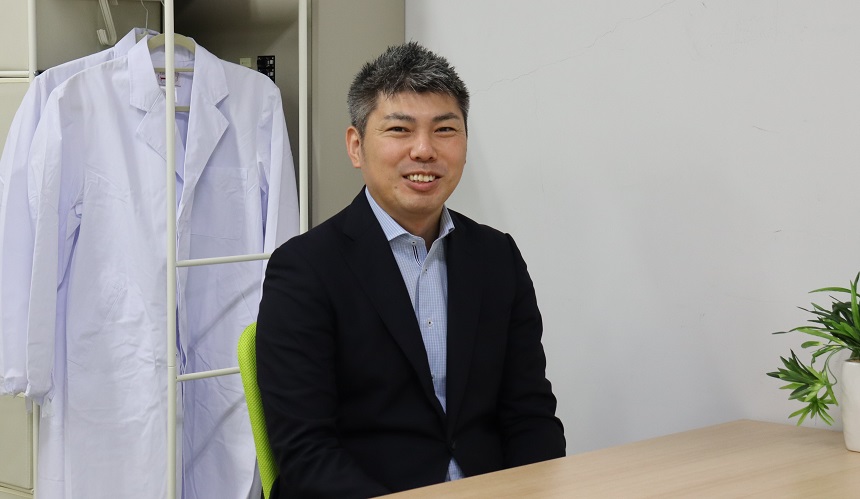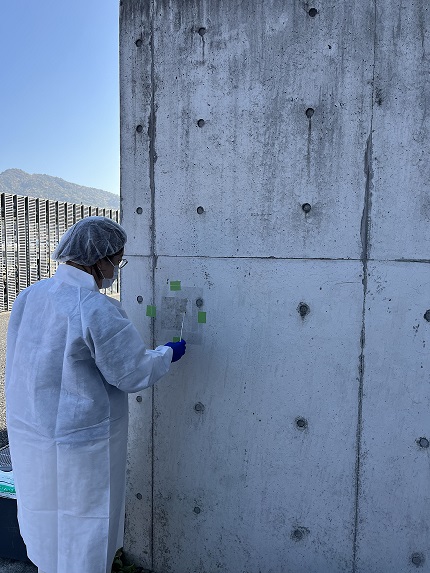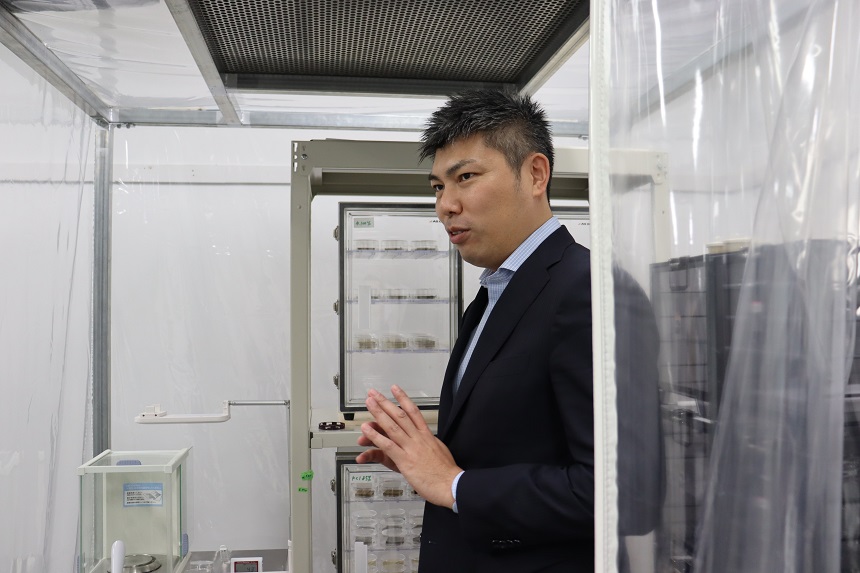Interview of Associate Professor Atsushi TERAMOTO
Researchers selected for JST FOREST in the FY2021

Harnessing the Power of Microorganisms to Create a System that Enables Residents to Cherish Their Buildings
Hoping that people will become more attached to their own homes and live in them for many years to come
My fields of expertise are building materials, construction, and maintenance and management. I have so far conducted various studies on evaluating and improving the performance of buildings, such as controlling cracks in concrete and enhancing construction methods. This led me to wonder what I could do to help make buildings last longer. After all, it's not enough just to make good products, I thought to myself.
The maintenance and management of most buildings, including our homes, is basically left to contractors. Naturally, this makes it difficult to take an interest in the wellbeing of one's own home. However, what if there was a system that allowed residents to easily diagnose the health of their homes? I believe that a system of this kind would make people more interested in their own homes and help them forge a sense of attachment to them, which would in turn make more people want to live in their homes for a longer period of time. If we were able to share the sensation of nurturing our own homes, our lives might become a little richer than they are now. I am honored that my research based on this idea has been selected for the Japan Science and Technology Agency (JST)'s FOREST (Fusion Oriented REsearch for disruptive Science and Technology) program.
Diagnosing building deterioration based on microbial habitat
I thought about how to construct a system that would enable residents themselves to diagnose the state of buildings. In doing so, I focused on microorganisms.
At the time I was writing my research application, PCR tests for COVID-19 were in full swing across the world, with some people taking these tests on an almost daily basis. I thought that it would be great if buildings could be inspected as easily as this, so I investigated microorganisms as a possible lead and found that there are many microorganisms living on building surfaces, just as there are on the human body. I knew that the types and amounts of microorganisms vary with changes in surface conditions (moisture content, pH, etc.). From this, I considered that if we could determine the microbial habitat of buildings, it would be possible to diagnose the performance of buildings in terms of thermal insulation, airtightness, strength, and durability. The goal of this research is to create a kit that allows occupants to easily examine deterioration themselves, similar to PCR testing, and to realize a world in which people can diagnose the condition of their own homes.
However, there is currently very little data on the microorganisms living in buildings, so the creation of a database containing such data is essential. Using the results of my research and know-how to date, it is possible to artificially create various types of deterioration in buildings. In this sense, this is a research theme that allows me to take advantage of our strengths.
The difficulty lies in surveying microorganisms. Microbial habitats vary from region to region, and thus cannot be uniformly evaluated in the same way throughout the country. I will need to work with researchers in each region to collect microorganisms from buildings and create a database for each region. This will require a lot of manpower. I also need to establish some kind of standard for sample collection methods to eliminate individual differences.
There are a number of hurdles to overcome, but I intend to clear them one by one without fail.

Samples being taken from a building
Using microorganisms to give buildings the desired functions
Assessing the condition of a building based on its microbial habitat is only the first stage. This research aims to take us one step further.
There are microorganisms in the world that perform a variety of functions. For example, microorganisms that fix cracks in concrete, microorganisms that release odors, microorganisms that change colors, and so on. I believe that if we can impart the functions of these special microorganisms to buildings, we can change the performance of buildings to suit our own preferences. Just imagine spraying your preferred microorganisms on the walls of your living space, like a misting spray, and letting them grow.
Imagine these scenarios. If diagnosis indicates that a building is deteriorating, you spray the surfaces with microorganisms that restore them. If you want to sleep in a more relaxed state, simply spray the walls of your bedroom with microorganisms that emit odors...If these things become possible, residents will be able to create a living space to their own liking, and their attachment to the building will increase. In order to turn this dream into reality, I am currently searching for microorganisms that can be used to impart certain functions and investigating the potential for them to inhabit building materials. In the future, I would like to promote collaboration between medicine and engineering and make progress in using of microorganisms to protect the health of occupants, such as by improving air quality and allergy symptoms. I hope to make significant advancements in this field, such that my name will become synonymous with microorganisms in the architectural field.

Wanting to give back to society while conducting enjoyable research
I value a style of doing things that allows me to work for the benefit of society through things that I enjoy doing. It is no exaggeration to say that I arrived where I am today as part of an ongoing quest to find fun research topics that take my fancy.
For example, I became a researcher because I found talking to researchers to be both stimulating and fun. In fact, when I was a student, I chose my laboratory from the perspective of asking “Who is the most interesting professor to talk to?” Another pleasure for me is to pursue my own interests and curiosities. For instance, when I was a researcher at a construction company, I took a hint from slippery yogurt pot lids and devised a concrete mold that would not leave air bubbles during construction.
Currently, I am also actively pursuing interdisciplinary exchanges to make my research even more enjoyable. Specifically, I am working on a project to apply biological sensing technology to building materials. Architecture is closely related to a variety of fields—both humanities and sciences—and I would like to continue to collaborate with many other fields by taking advantage of this particularity. Personally, I like history, so I would like to work on research examining the global history of building materials. While maintaining my attitude toward my work as a strength, I will continue to challenge myself with various research projects centered on architecture.


 Home
Home

